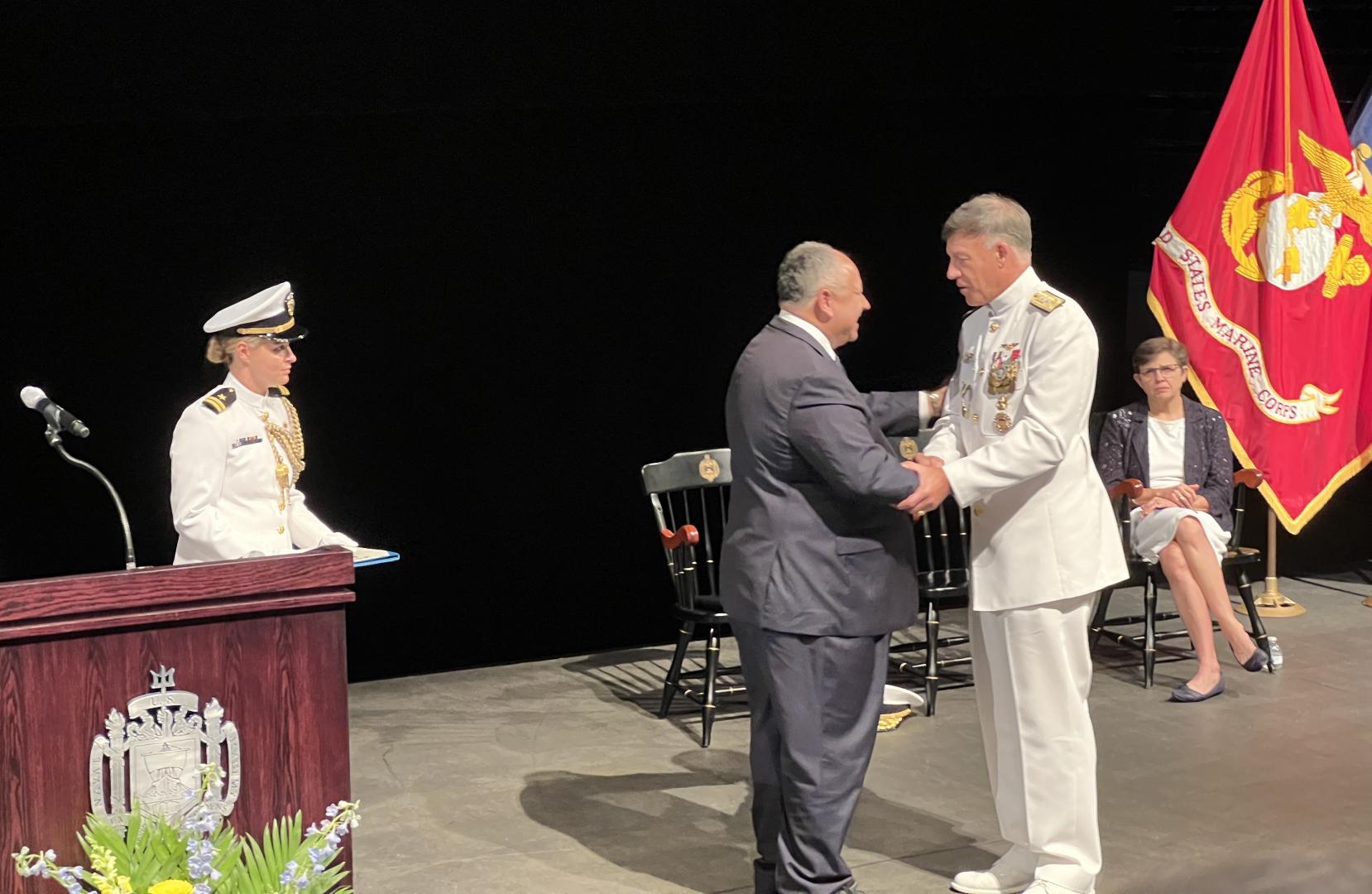Last week’s retirement ceremony for United States Naval Academy Superintendent Vice Admiral Sean Buck was an extraordinary event in honor of a man I have come to admire. It got me thinking about the institution that shaped him, and what sets the armed forces apart from the rest of American society.
As the son of a World War II Marine who later served as Assistant Secretary of Defense, and the younger brother of Vietnam War protesters, my perceptions of the armed forces growing up was confusing.
When Dad told us how his boot camp drill sergeant punished him for insolence by making him fight a professional boxer until his nose was broken, and later made him move water from one bucket to another on his knees with a spoon in his mouth, he made sure we understood that he harbored no resentment, and that he learned from it. I guess the lesson was that you can be both a rebel and a loyal soldier.
As County Executive of Anne Arundel County, I’ve had the privilege of getting to know base commanders, superintendents, faculty, and enlisted men and women at two of our nation’s greatest military installations: Fort George G. Meade and the United States Naval Academy. I’m no fan of war, but I have become a fan of these institutions and an admirer of the people they produce.
At the end of a formal dress parade on the Naval Academy’s Worden Field, I told an older alumnus in the seat next to me how impressed I was with the discipline and coordination, and how I wished more people could experience something like it in their education. “We not me,” was his reply. Exactly.
When I spoke to a Naval Academy political science class and had lunch with them afterwards, I expected set jaws and sameness, hiding behind uniforms. What I found instead was young men and women extraordinarily comfortable in their own skin, diverse in thought and background, and easy to talk to. The drills and discipline, I concluded, had not stamped out individuality. It had created self-confidence.
I’ve been just as impressed by what I’ve witnessed at Fort Meade. It is the workplace for 18,000 military personnel and 40,000 civilians, 11,000 of whom live on the base. That makes the Garrison Commander equivalent to a mayor of a city the size of Annapolis, whose training is Army.
The Garrison Commanders I’ve known - Colonel Spragg, Colonel Nyland, and now Colonel Sapp - have all demonstrated not only discipline, but also humility, compassion, transparency, and listening skills. They do virtual town halls, show up at community events, and make hard decisions about housing, health, equity, and security. And they’re damn good at it.
It should come as no surprise that our armed forces lead the nation in access to healthcare, childcare, and housing, and that equity, diversity, and inclusion are no longer controversial issues on a military installation. The new Resiliency Center at Fort Meade is a model for towns and cities that seek to provide mental health services to their residents.
No institution is perfect, but the ones that our country has built over many decades to defend our country from foreign attack truly are extraordinary examples of what human beings can accomplish when they work together.
Those of us who will never experience them from the inside should take a good long look at what makes them tick, and learn from it.
Steuart Pittman
Anne Arundel County Executive

